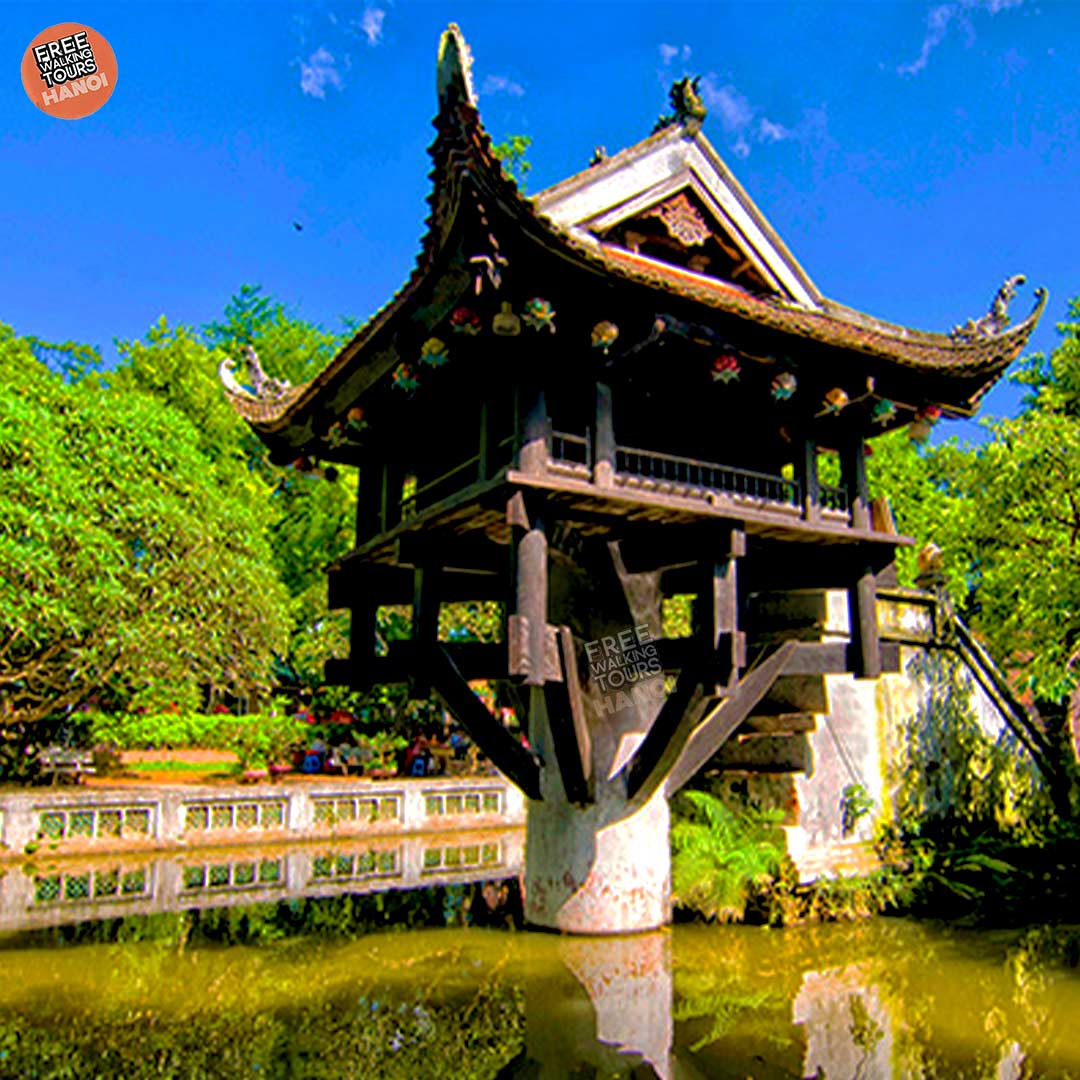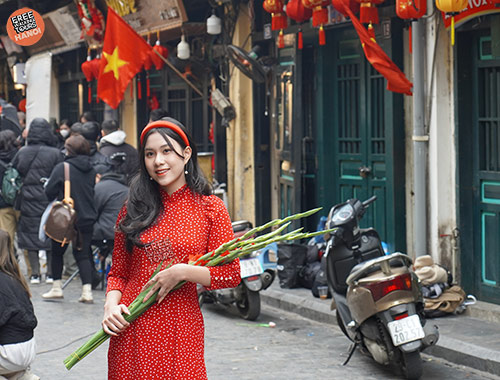The One Pillar Pagoda and Cultural Festivals
A Glimpse into Vietnam’s Rich Heritage
Introduction
Vietnam, a country known for its captivating cultural heritage, boasts numerous iconic landmarks and vibrant festivals. Among these, the One Pillar Pagoda stands as a testament to Vietnam’s rich history and spiritual traditions. This essay explores the historical significance of the One Pillar Pagoda and delves into the cultural festivals in traditions.
A Symbol of Spiritual Grace
The One Pillar Pagoda, located in Hanoi, Vietnam, is an architectural marvel that holds immense cultural and religious significance. Built in the 11th century during the Ly Dynasty, it was constructed as a humble wooden structure, resembling a lotus blossom emerging from a pond. The pagoda’s unique design reflects the fusion of Buddhism and Vietnamese architecture, making it an exceptional symbol of spiritual grace.
The Legendary Origin
According to legend, Emperor Ly Thai Tong dreamt of the Bodhisattva Avalokiteshvara, who handed him a male child on a lotus flower. The Emperor, seeing this as a divine sign, built the One Pillar Pagoda in honor of the child and the Bodhisattva. This legend further enhances the mystical allure of the pagoda, drawing countless visitors to witness its magnificence.

Cultural Festivals Celebrating Vietnam’s Rich Heritage
Tet Nguyen Dan, commonly known as Tet, is one of Vietnam’s most important cultural festivals. Celebrated during the first three days of the lunar calendar, it signifies the arrival of spring and the renewal of life. Families gather to pay respects to ancestors, exchange wishes for good fortune, and partake in traditional dishes such as banh chung. Tet truly captures the essence of Vietnam’s rich heritage, showcasing its customs, beliefs, and vibrant festivities.
Mid-Autumn Festival: Honoring Family and Harvest
The Mid-Autumn Festival, also known as Tet Trung Thu, is a joyous celebration that takes place on the 15th day of the eighth lunar month. This festival revolves around children, who carry colorful lanterns and participate in dragon dances. Mooncakes, a traditional delicacy symbolizing family reunion, are shared among loved ones. The Mid-Autumn Festival exemplifies Vietnam’s deep-rooted respect for family bonds and agricultural traditions.
The Importance of Cultural Preservation
Preserving cultural heritage, including the One Pillar Pagoda and traditional festivals, is vital for maintaining Vietnam’s identity and fostering a sense of national pride. These tangible and intangible cultural treasures not only reflect the country’s history but also contribute to tourism and economic development. By safeguarding these invaluable assets, Vietnam ensures the transmission of its rich heritage to future generations.
Promoting Cultural Tourism and Exchange
The One Pillar Pagoda and cultural festivals serve as magnets for domestic and international tourists. Which provide them a glimpse into Vietnam’s cultural tapestry. Visitors have the opportunity to immerse themselves in the country’s vibrant traditions, witness breathtaking architectural wonders, and engage with local customs. Cultural tourism not only boosts the economy but also promotes cross-cultural exchange and mutual understanding.
Government Initiatives for Cultural Preservation
Recognizing the significance of the One Pillar Pagoda and cultural festivals, the Vietnamese government has implemented various initiatives to preserve and protect these cultural treasures. Strict conservation measures are in place to maintain the integrity of the One Pillar Pagoda. These ensures that future generations can appreciate its historical and architectural splendor. Additionally, the government actively supports the organization and promotion of cultural festivals, providing resources and infrastructure to the continued celebration.

Education and Cultural Awareness
Education plays a crucial role in preserving cultural heritage. Vietnam has made significant efforts to integrate cultural education into school curricula. We could promote an understanding and appreciation of the One Pillar Pagoda and cultural festivals from an early age. By fostering cultural awareness among the youth, Vietnam aims to cultivate a sense of pride and responsibility towards their cultural heritage. Therefore, we would ensure its continuity and protection for years to come.
Community Involvement and Local Initiatives
Preserving cultural heritage is not solely the responsibility of the government; it requires active participation from local communities as well. Many communities near the One Pillar Pagoda and festival sites have taken initiatives to safeguard and promote their cultural traditions. They organize workshops, exhibitions, and cultural performances, engaging both locals and visitors in a meaningful way. These grassroots efforts not only contribute to the preservation of cultural heritage but also foster a sense of ownership and pride within the communities themselves.
The Global Significance of Vietnam’s Cultural Heritage
Vietnam’s cultural heritage extends beyond its borders, captivating people from all corners of the world. The One Pillar Pagoda, with its architectural beauty and spiritual symbolism, has become an iconic symbol of Vietnam’s rich culture and history. It attracts international tourists, scholars, and researchers who seek to explore and appreciate the uniqueness of Vietnamese traditions.
The cultural festivals, with their colorful celebrations and lively atmosphere, have also gained international recognition. Tet Nguyen Dan and the Mid-Autumn Festival have become key attractions for tourists. Who yearn to experience the vibrancy and warmth of Vietnamese culture firsthand. These festivals offer visitors an opportunity to witness the depth of Vietnamese traditions and immerse themselves in the local customs. That fosters cultural exchange and mutual understanding on a global scale.
Furthermore, Vietnam’s cultural heritage has been inscribed on prestigious UNESCO World Heritage lists. The recognition of sites like the Imperial Citadel of Thang Long in Hanoi and the Complex of Hué Monuments highlights the exceptional universal value of Vietnam’s cultural assets. These listings not only honor Vietnam’s cultural achievements but also serve as a testament to the nation’s commitment to preserving its heritage for humanity.
Conclusion
Vietnam’s cultural heritage, represented by the One Pillar Pagoda and cultural festivals, is a source of national pride and global fascination. Through the preservation of architectural wonders, Vietnam showcases its rich history, spiritual beliefs, and diverse customs. The efforts invested in cultural preservation, education, and community involvement ensure the continuity of this heritage for future generations. As the world becomes increasingly interconnected, Vietnam’s cultural treasures serve as bridges, fostering cross-cultural exchange and understanding. By cherishing its cultural heritage, Vietnam safeguards its own identity and contributes to the collective tapestry of human civilization.
If you are in Vietnam and interested in discovering more about Hanoi – the capital and its significance, we invite you to join us at Free Walking Tours Hanoi. We’ll take you across the building, tell you all about its history, and provide you with a unique perspective of the city. Book now and don’t miss out on this amazing experience.

